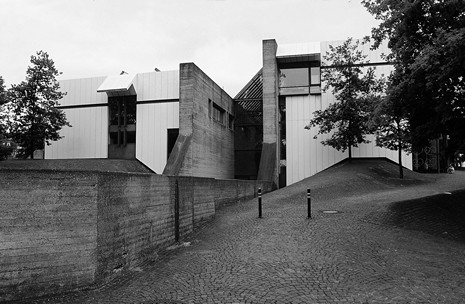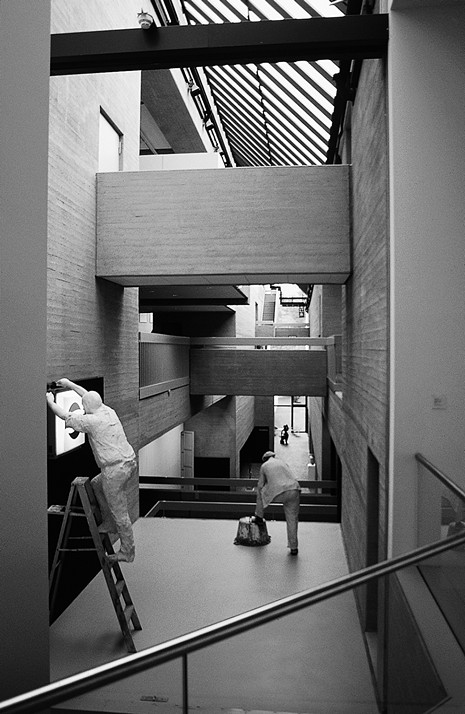Description
Created for a substantial collection of twentieth-century artworks, the building (voluminous, but without giving the appearance of being monumental) on the bank of Lake Masch near Hanover’s city centre turns its inside outwards in places. In correspondence with the spirit of the nineteen-seventies, it goes to some trouble to avoid provoking a fear of the unknown and instead, awake visitors’ curiosity. At the same time, the hint of a city wall around the building illuminates the function of conservation in an enclosed safe retreat into which public space is supposed to enter dialogically.
The entrance positioned asymmetrically between two building wings is therefore welcoming. It is roofed over by a paraphrase of the classical columned portico and situated on the ridge of a hill accessed by stairs. The hill’s surface structure continues over the building’s boundary into the interior. Through a spacious entrance, one reaches the ‘museum street,’ 17 metres high and 120 metres long, bent at the interface between the parts of the building and receiving natural light from above through the glass roof. Like a ravine bridged over many times, this ‘street’ is the axis that forms the museum’s backbone, offering a variety of views over all the floors, and continuing beyond its external boundaries. From this one accesses the collection rooms which are arranged on one hand in enfilade as a sequence of six light, high-ceilinged rooms of varying dimensions, and on the other hand, are variable and interlinked in a complex fashion. The enormous 17-metre-wide, 41-metre-long temporary exhibition room on the ground floor can be flexibly partitioned by moveable walls. Although the building’s shape, sometimes irregular, and the variety of connections – primarily between the collection rooms in the basement – make orientation more difficult, in exchange ever-changing perspectives are offered. Various different tours thematically organized and each containing a ‘didactic room’ always lead back to the museum street. While the exhibition rooms in the basement are lit by artificial light, the atmosphere of the rooms on the main floor lit from above is determined by daylight supplemented ingeniously by artificial light.
Bauwelt 37/1979, pp. 1585-1596 (Peter and Ursula Trint/Dieter Quast; Joachim Büchner) • Techniques et Architecture 326/1979, pp. 62-63 • Detail 3/1980, pp. 377-381 • Baumeister 8/1980, pp. 785-789 • Klaus Kowalski, “Das Kunstmuseum Hannover mit Sammlung Sprengel,” in: Museumskunde 46/1981, pp. 155-164 • Hannelore Schubert, Moderner Museumsbau, Stuttgart, 1986, pp. 124-126 • Bauwelt 28-29/1992, pp. 1600-1601 (Christoph Gunßer)
Drawings
Photos
 View from the north of the museum street extending beyond the building
View from the north of the museum street extending beyond the building
 View of the internal museum street
View of the internal museum street
Originally published in: Paul von Naredi-Rainer, Museum Buildings: A Design Manual, Birkhäuser, 2004.